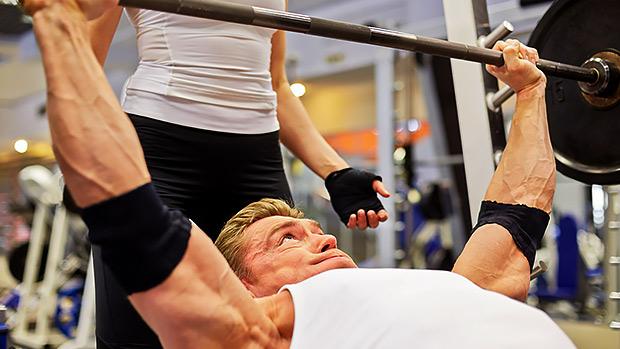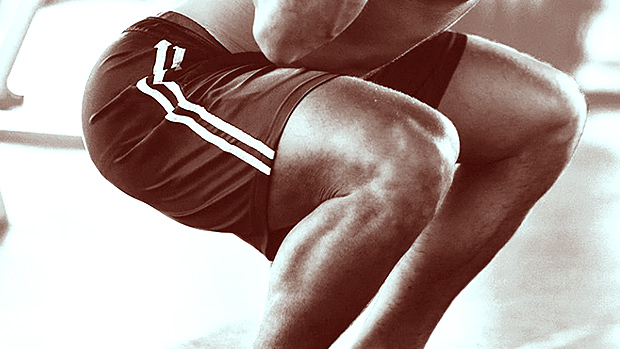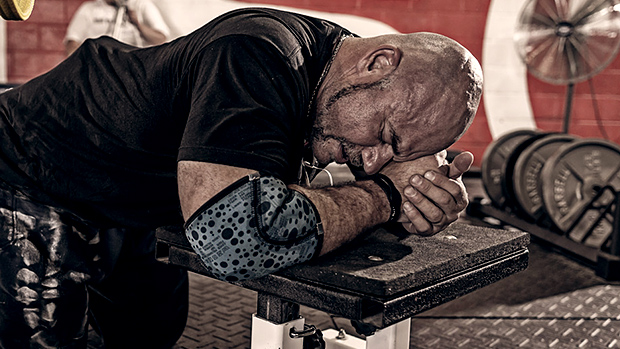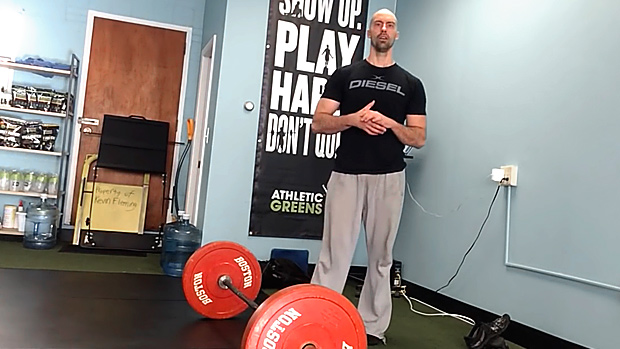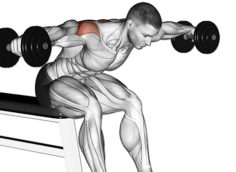The Minimalist's Way to a Bigger Bench
The bench press is the most technical of the "big 3" lifts and can take a long time to get right. If a technique issue is holding you back, get a good coach to look at it.
But if it's a strength issue, all you need to do is pick the right accessory lifts. Stop thinking you need a dozen different fancy bars or machines to do this. The assistance work needed to hit your next bench PR can be done using just a barbell.
If the bar is stapled to your chest when you fail, this is usually a mix of upper-back strength and postural/scapular control. Upper-back strength is a relatively easy fix, but improving your mind-muscle connection with your scapulae can take time. If you can't feel them while benching, then this is definitely something you need to improve.
What to Do to Improve Scapular Control
Scapular Rocking
You want to feel your scapula gliding up and down as your arms extend overhead and come back.
The One-Arm Scap Drill
This is a great way to get a good feeling for all the muscles in and around your scapulae. You want to be able to create maximal tension around this area.
The Slow Eccentric Bench Press
It's simple but effective. The slow eccentric (lowering phase) will allow you to dial-in the feelings from the above drills to the bench press pattern.
What to Do for a Weak Upper Back
You want to focus primarily on lats, rear delts, and external rotators. There's a whole host of exercises you could choose, but here are a few using minimal equipment:
- Barbell Pullover
- Bent-Over Rear Delt Raise (use small plates)
- Lying External Rotation (use small plates)
- Powell Raise (use small plates)
If you manage to move the bar up a few inches before stalling, then your pec strength is lagging. Despite its reputation, it's quite easy to bench press in a shoulder/tricep dominant fashion and leave the pecs under-stimulated.
What to Do for Weak Pecs
The Wide-Grip Bench Press
The wider grip will mean your elbows are more flared during the lift, loading the pecs more. No need to go to extremes here, going out half to a full hand-width each side is enough.
The Spoto Press
Use the same bar path as your normal bench press except stop 1-2 inches off your chest (just below your sticking point). Pause at that point for a second before driving the bar back up. This is a great option for those who are over-reliant on leg drive.
At the mid-range, the load starts to be transferred over to the front delts and triceps. So weakness here is symptomatic of weak front delts, especially in those who don't do regular overhead work.
The Incline Bench Press
This is the most effective movement for targeting this sticking point. Use an incline of 15-30 degrees. A higher incline can mean less front delt stimulation due to the lower weight used. If you don't have an adjustable bench, simply elevate the end of your bench on something like a bumper plate.
The Front Raise
It can be done with a barbell or holding weight plates. Make sure you're not using body momentum and pause briefly at the top where tension is highest. This can be done supported on an incline bench if you have an adjustable bench.
Failing at the last hurdle on bench is most commonly a triceps strength issue. It can also come down to upper back/shoulder stability. The further the bar gets from the body, the longer the moment arm, and the easier it can be for small deviations to throw the bar off path.
What to Do for Weak Triceps
Close-Grip Work
All varieties of close-grip work will put more emphasis on the triceps. Mix it up. You could do close-grip bench press, floor press, Spoto press, or decline press. Use whatever variation you feel most in your triceps.
The Pin Press
Set up safety pins so you only have to press the top third or so of the movement. Make sure the bar position and your arm position mimic your positioning at that point of your full bench press.
What to Do for Poor Shoulder Stability
Supra-Maximal Holds
Unrack a heavy load (more than your 1RM) and bend your elbows slightly. Hold the bar in this position anywhere from 5-10 seconds before re-racking. Make sure you have a reliable spotter who isn't checking Tinder while he spots you.
The Hanging Band Bench Press
Use resistance bands to suspend plates or kettlebells from the bar to create instability. You'll have to work overtime to stabilize the bar during your reps because of the oscillations of the hanging plates. This works well mixed with slow eccentrics or negatives.
You now have a full arsenal of accessory movements to use with a pretty basic home gym setup. Just pick the correct movements based on your weak points and hit your next bench press PR.

